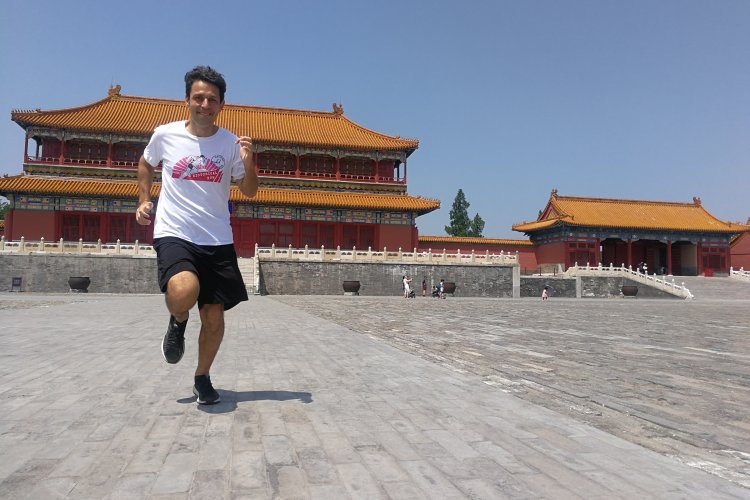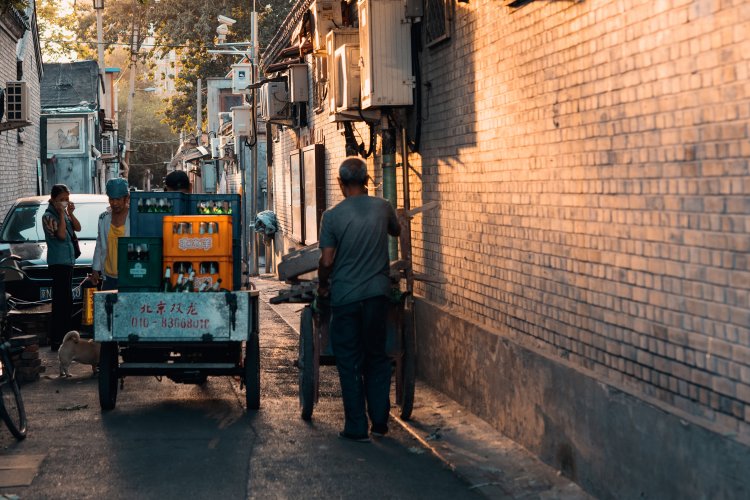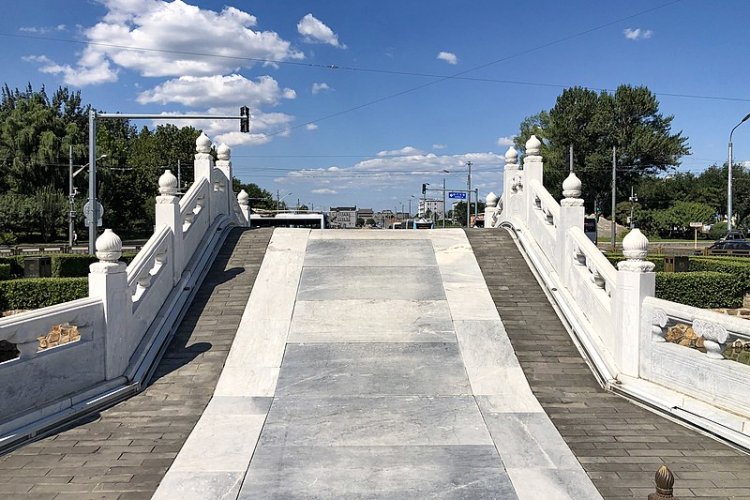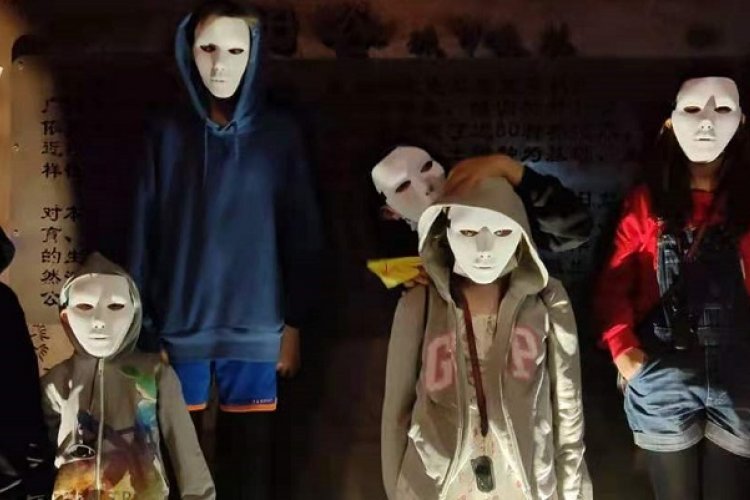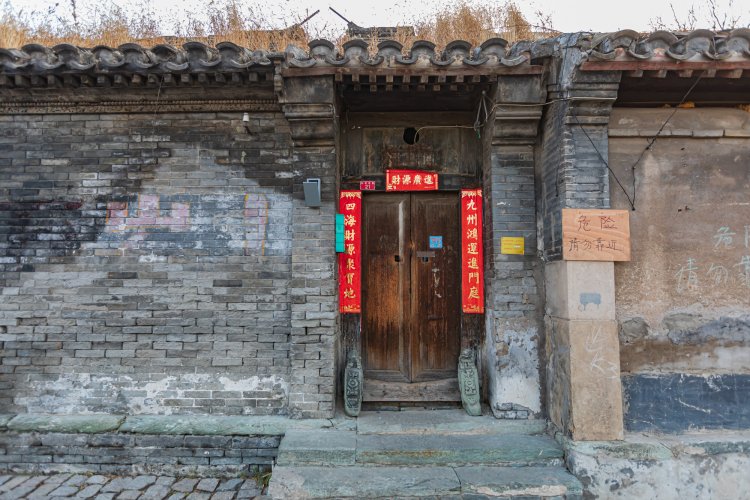A Walking Guide to the Central Axis: Beijing's Newest UNESCO Heritage Site
Beijing's Central Axis, a linear path running 7.8km north to south through the city's center, was inscribed on the UNESCO World Heritage list this past week, following years of work by city officials to have the important walkway codified.
In celebration of this achievement, we're rerunning one of our favorite pieces on the subject, a guide to walking the Central Axis from Yongdingmen to Gulou.
I’m greeted by the warm spring air as I step out of Line 14’s Yongdingmenwai subway station, a little ways south of the city center. It’s here, past the Temple of Heaven, where Beijing becomes a little less congested, its roads and sidewalks a little less populated. This is where my walk along the Central Axis begins.
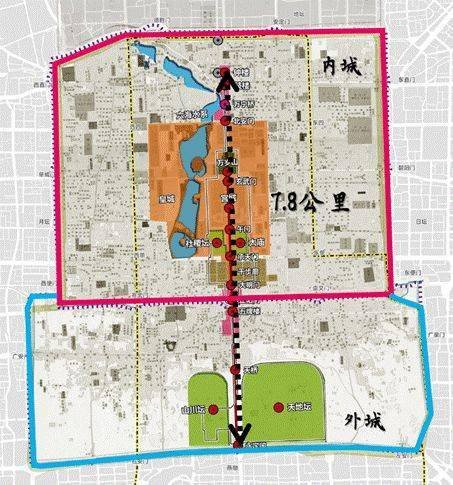
The Central Axis, or “Dragon’s Spine” for a more hardcore name, is an imaginary division stretching from Yongdingmen all the way through Qianmen and the Forbidden City, and finally ending at Gulou. This elaborate north-south path was once reserved for emperors.
The idea of a central north-south line intersecting a city isn’t unique to Beijing. The practice of tracing a line from north to south to encourage spatial harmony in a city allegedly came about way back during the Qin dynasty (221 BC-220 AD). However, Beijing’s Central Axis is the best intact example of such a line, connecting the Forbidden City to important religious sites – like the Temple of Heaven and Temple of Agriculture – royal gardens, and urban facilities like the bell and drum towers.
Walk the walk
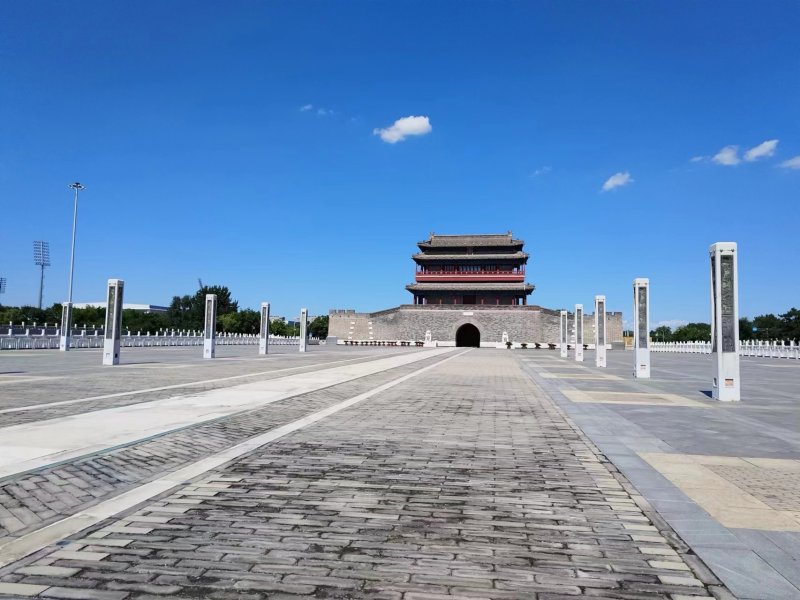
Things begin at the aforementioned gate, which is more of a reconstruction of the original gate, the centerpiece of its own park.
Although access to the park was either closed or being refurbished due to Covid restrictions for the greater part of 2021 and 2022, everything reopened last year, making Yongdingmen Park easily accessible via a pedestrian underpass to its south, not too far from Yongdingmenwai subway station. Once inside the park, the walk can properly commence.
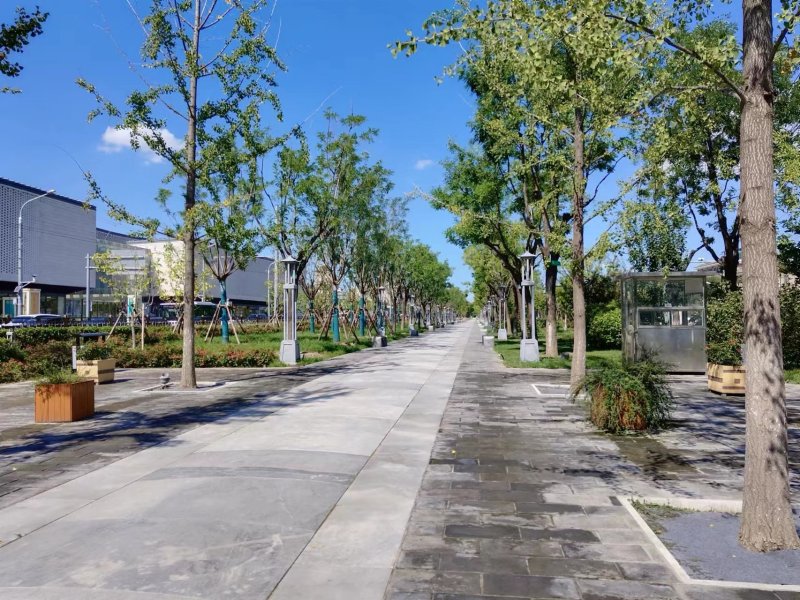
Getting from Yongdingmen to Qianmen is the easy part of the stroll, as there’s a tiled path -- with lots of pleasant greenery recently added -- that literally spans the roadway leading to the pedestrian street. That being said, this is where things begin to get tricky.
Following an exit from the park, the walkway extends to where Tianqiao Nandajie intersects Nanwei Lu (南纬路). When we visited over the May holiday, the gate connecting the path to the intersection (see below, upper lefthand photo) was open. If it's not, follow these instructions: look for the bus stop to the left hand side of the park’s north gate and go through the pedestrian underpass. Exit near Tianqiao Department Store (天桥百货商场 Tiānqiáo Bǎihuòshāngchǎng), then cross the intersection north then east and you’ll be back on the path.
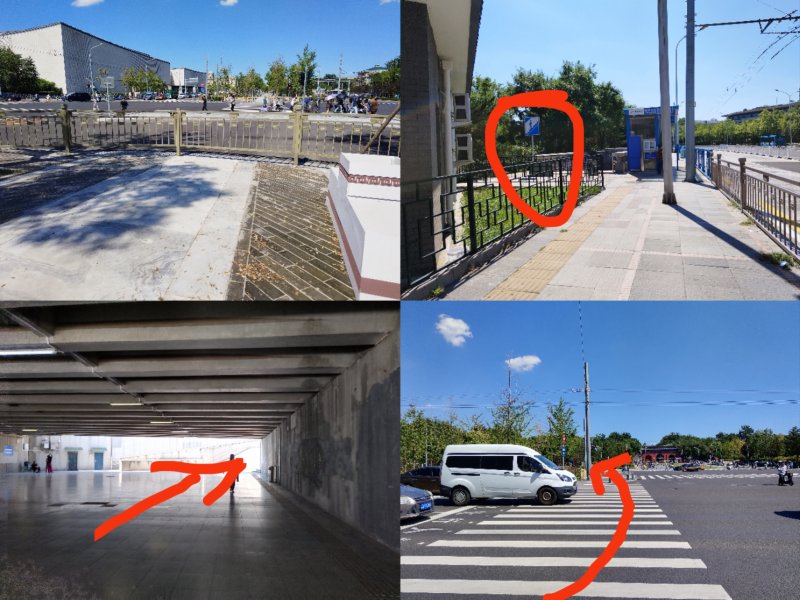
You may have to repeat this once you reach the actual Tianqiao at Yong'an Lu (永安路) but then it’s smooth sailing until nearing Caishikou Dongdajie Pulu (珠市口东大街铺路). Here, simply cross from the walkway to the east side of the street and walk northeast until you find a pedestrian overpass. Cross, then double back and you’re at Qianmen Pedestrian Street.
Known as Zhengyangmen Street during the Ming and Qing dynasties, Qianmen Street has retained its original function for the most part. Instead of meat, cloth, jewelry markets, and specialized vendors, today you'll find food and knicknack shops catering mostly to tourists, with a few big brands and some food -- a branch of Peking duck shop Quanjude amongst these -- in the mix. Among these hutongs you'll find Dashilar and, a favorite haunt of ours, Yangmeizhu Byway.
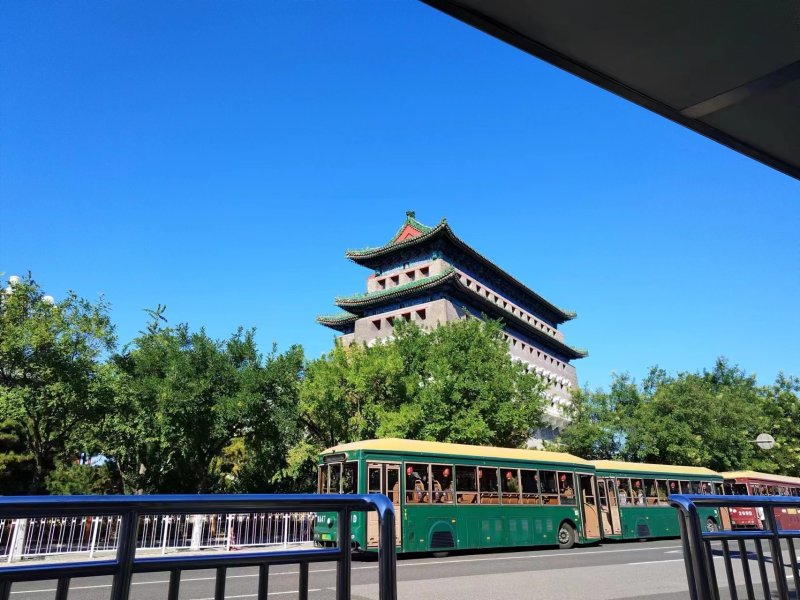
Walk to the end and you’ll reach Qianmen. Also known as 正阳门 Zhèngyángmén, it consists of a massive guard tower and the gate itself, which bears a striking similarity to Yongdingmen.
Beyond this is Tian’anmen Square, which, although relatively new, works to add to the Central Axis – with Chang’an Jie passing next to it to connect new and old China from east to west.
To Tian’anmen or Not to Tian’anmen
It’s no secret that getting around Tian’anmen Square is a hassle any time of the year, so even though the Central Axis cuts through the square and the Forbidden City, if you haven't already purchased tickets for a walk through we’d recommend instead turning east at Qianmen Dongdajie and, if you can’t make it through Guangchang Dongcelu (广场东侧路), go to Zhengyi Lu (正义路) instead.
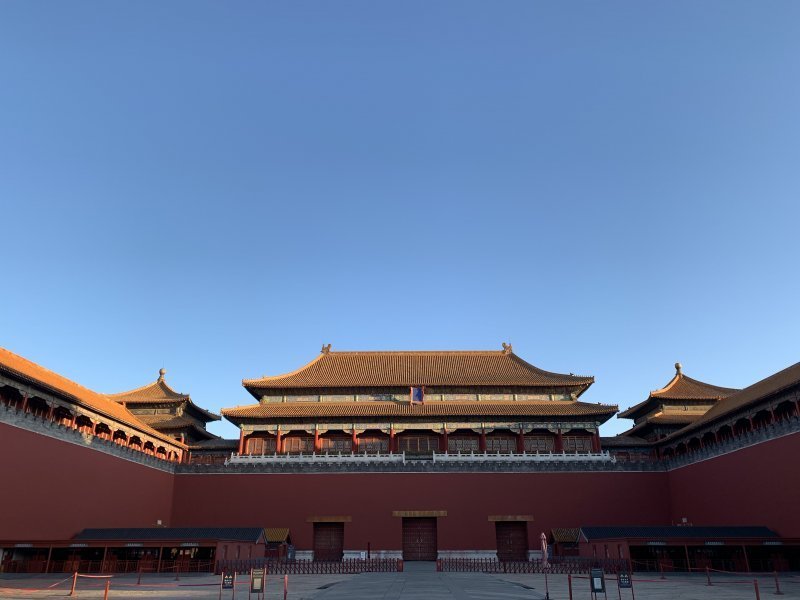
This cuts through the Former Legation Quarter, which makes for a fun stroll in and of itself if you choose to linger in the area. If not, you can cut all the way up to Wusi Dajie (五四大街), where a monument to the May 4th Movement stands.
Head west here and then continue on the Central Axis by heading into Jingshan Park.
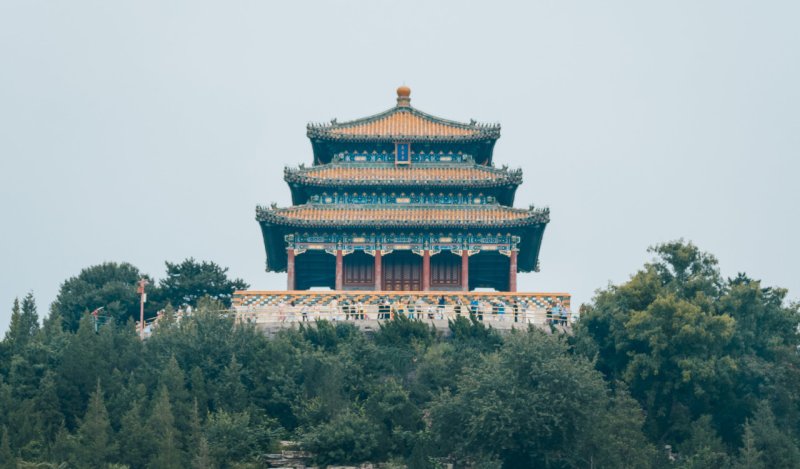
From here, go over the hill and down the north side, and continue along Di’anmen North Road to Gulou and Zhonglou, the bell and drum towers, the city’s ancient timekeepers that were even joined in their responsibilities by a noon cannon for a period of time in the Republican Era.
Get here by sundown and climb up the bell tower for a look back at your walk if you wish. As for me, when I reached the end of this long tour I could barely feel my legs and was hankering for some dinner. Thus, it was time for a hop on the subway and a restful ride back home.
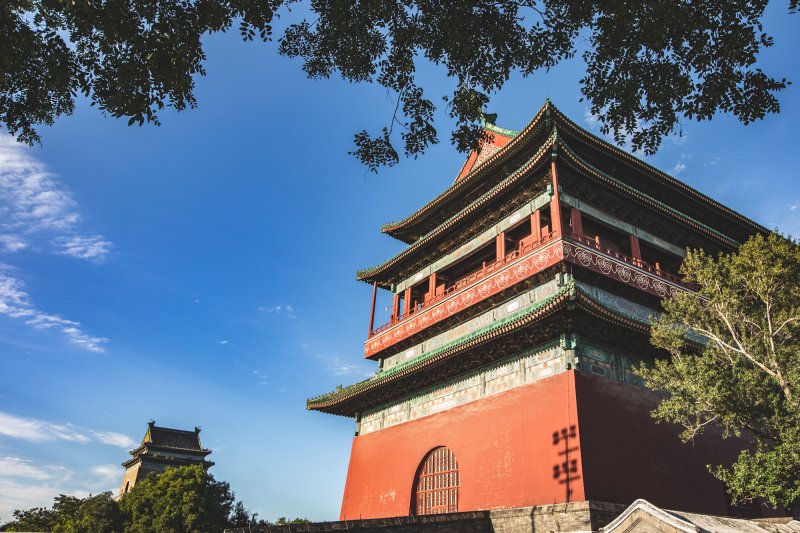
Walk starts here:
Yongdingmen Park 永定门公园
18 East Binhe Road, Xicheng District
西城区永定门东滨河路18号
Walk ends here:
Bell & Drum Tower Cultural Square 钟鼓楼文化广场
7 Zhaofu Street, Andingmen Inner Street, Dongcheng District
东城区安定门内赵府街7号
READ: Who's Who in the World of Beijing Walking Tours
Images: Unsplash, zhuanlan.zhihu.com, Vincent R. Vinci, Uni You, Jeremiah Jenne


